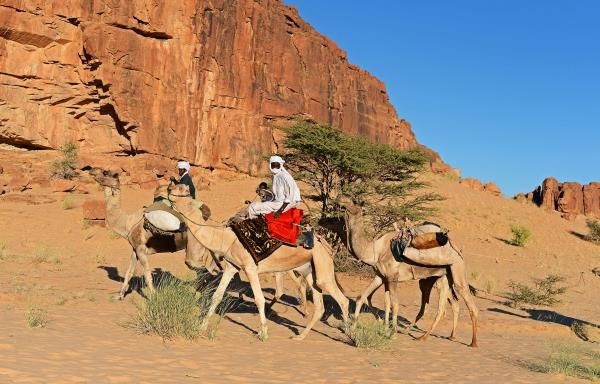
25 November 2016, ROME--Assuring adequate tenure rights to land is an important step in improving food security for millions of people in developing countries, but safeguarding tenure isn't so straightforward when it comes to the way land is used by mobile pastoralist communities.
More than 500 million people on the planet rely on livestock herding, often steering their animals around various landscapes to reach water and pasture sources and avoid drought, animal disease and civil conflict. To address the inherently more complex needs of pastoralists, many of whom rely on covering vast territories in opportunistic ways, FAO, with the support of the International Union for Conservation of Nature, the Commission on Environmental Law and the Commission on Environment, Economic and Social Policy, has produced a technical yet accessible guide on how to establish viable tenure arrangements for the often-marginalized people who use around a third of the earth's surface.
Improving governance of pastoral lands is part of a series of publications offering insight on how to implement the Voluntary Guidelines on the Responsible Governance of Tenure of Land, Fisheries and Forests in the Context of National Food Security, a landmark initiative whose global endorsement in 2012 was begun and brokered by FAO.
The world's pastoralists engage in a wide variety of practices and include a great number of cultures in such diverse settings as Mongolia, Niger, Spain, Kenya, Norway and the United States of America. Pastoralists inhabit rangeland areas, many of which are arid or semi-arid, and they employ a highly adaptable livelihood strategy that is poorly understood by outsiders. Their adaptability relies on access rights that often jar with classical notions of property rights.
"Pastoralism is a system of livestock production that takes advantage of both the diversity and the seasonality of natural resources in the rangelands. It is based on large-scale, carefully planned movements of livestock, which demands high levels of coordination between multiple users. This has led to the emergence of customs and institutions that enable decisions to be effectively made and enforced by local communities," says Jonathan Davies, coordinator of IUCN's Drylands Programme and lead author of the Technical Guide.
Progress in ecological science and increasing pastoral voices in global fora have galvanized increasing attention to ways of life now seen as flexible and resilient rather than obsolete.
"Pastoralism is one of the efficient and sustainable strategies for managing rangelands and pastoralists play a key role in ensuring multi-functionality of rangelands," said Caterina Batello, a senior FAO officer specializing in ecosystem management who supervised production of the guide book.
Support for pastoralist communities contributes crucially not only to Sustainable Development Goal 2, which calls for an end to hunger and the promotion of sustainable agriculture, but also SDG 15, which demands the preservation of diverse forms of life and a halt to both land degradation and biodiversity loss.
Overlapping rights and statutory law
The technical guide aims to provide orientation on a key issue for sustainable pastoralism: securing governance and tenure for livelihoods without undermining customary arrangements.
While sometimes referred to as "fuzzy" - overlapping and subject to change - pastoralist rights, which range from access to pastures, watering points, movement corridors between seasonal grazing areas, encampments and markets, are often embedded in informal arrangements based on customary systems.
The challenge is to reconcile such customary systems with formal, statutory regimes without losing the intrinsic flexibility pastoralism requires. The technical guide outlines how this can be achieved through case studies where legal recognition of customary rights as having same value as statutory rights have been depicted.
Resilience through sustainable pastoralism
Adapted and resilient pastoral systems - which include critical functions such as soil fertilization, wider seed dispersal, improved groundwater infiltration, landscape maintenance and compatibility with local wildlife - are estimated to be two to ten times more productive per unit area and resilient over a longer period than some of the alternative land uses such as crop farming and mining that have been proposed to replace them.
Undergrazing can be as great a threat as overgrazing when it comes to environmental degradation. When conflicts led to pastoral lands being abandoned in East Africa, a lack of manure and rotational grazing led to lower plant diversity and thorny shrubs quickly took over.
Overgrazing is often a symptom of flawed governance. For example, absentee herd owners in North Africa often insist that animals remain near market centers where they can be quickly traded, leading to underutilization of distant rangelands and widespread degradation of those closer to points of sale.
New borders can also pose thorny problems. For instance, Borana pastoralists in Kenya and Ethiopia, used to give surplus animals to distant relatives in either of the countries on the understanding that, in times of need they could count on a credit to rebuild their stocks. State lines have complicated that risk-management strategy.